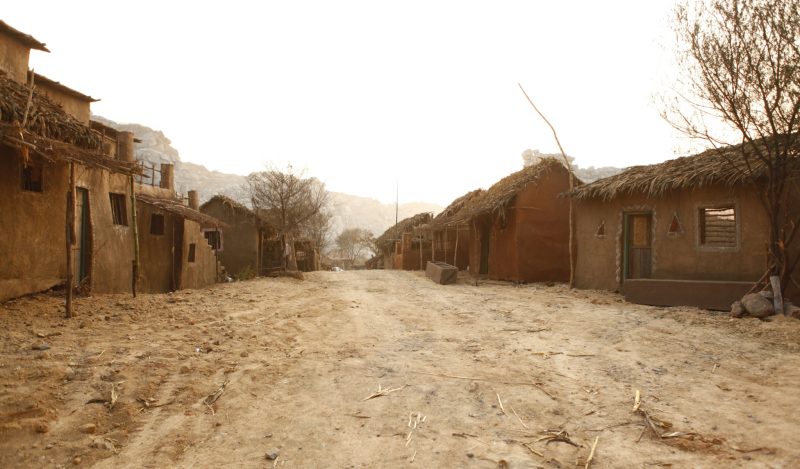The pandemic has been an extended three-year “teachable moment” for many of us who previously had been content to go along with the public health messages from our nearly universally trusted medical experts, drug regulators and public health institutions.
Safety Signals
In a peer-reviewed recent article, David Bell and colleagues concluded that “based on costs, disease burden and intervention effectiveness,” mass Covid-19 vaccination campaigns did “not meet standard public health requirements for clear expected benefit.” Several eminent experts warned about the likelihood of such a conclusion from the start and opinion has gradually been shifting towards this view, as I tried to summarize earlier.
In this article I want to look specifically at the concept of “safety signals” because I don’t believe the significance of this concept in medical science and public health interventions is widely understood in the general public.
I first became interested in this after watching Dr Peter McCullough in a TV interview with France Soir in June 2021. He pointed out that the CDC’s Vaccine Adverse Events Reporting System (VAERS) normally records about 25 deaths per year from all vaccines. During the Covid pandemic, by 11 June 2021 it had verified 5,993 deaths, 20,737 hospitalizations, 47,837 urgent care visits, 1,538 anaphylaxis cases, and 1,868 cases of Bell’s palsy.
Because VAERS is a passive-surveillance system, he said, the general consensus is that the numbers are vastly underreported. He warned that this is “a major safety signal … that has exceeded all boundaries of acceptability.” Quizzed on the causal link to vaccines, he answered: “it’s biologically plausible, temporally associated, internally consistent month by month” and also “externally consistent” with data from the US, Europe and England. “The vaccine is in the causal pathway to death … The majority of these 6,000 Americans, they were healthy enough to walk into a vaccine center and within 2-4 days they’re dead.”
That was almost two years ago.
The European Medicines Agency defines “safety signal” as:
Information on a new or known adverse event that is potentially caused by a medicine and that warrants further investigation. Signals are generated from several sources such as spontaneous reports, clinical studies and the scientific literature.
The WHO says:
a safety signal refers to information on a new or known side effect that may be caused by a medicine and is typically generated from more than a single report of a suspected side effect.
A safety signal does not in and of itself establish a direct causal relationship between a medicine and any side effect. But it does generate “a hypothesis that, together with data and arguments, justifies the need” for an evaluation of “what is called causality assessment.”
To complete the trilogy of authoritative pronouncements on the meaning, role and critical importance of safety signals, Australia’s drugs regulator, the Therapeutic Goods Administration, directs medicine sponsors that:
You should establish and manage a pharmacovigilance system to help you meet your pharmacovigilance responsibilities…
In terms of monitoring and collecting safety information, your pharmacovigilance system should allow you to:
- identify and collect all information related to the safety of your medicine from all possible sources, including
- spontaneous reports of adverse reactions (including consumer reports to you, or to people who work for you or have a contractual relationship with you)
- internet and social media reports
- reports from non-medical sources
- solicited reports, such as from post-registration studies or post-market initiatives
- reports in international and local literature
- individual adverse drug reaction reports in the TGA’s Database of Adverse Event Notifications (DAEN)…
If you verify a signal that may change the benefit–risk balance of a medicine, you MUST report it to us as a significant safety issue together with any actions you propose to take, or justification for no further action.
That seems pretty clear and comprehensive. If only it had been followed with respect to the Covid-19 mRNA vaccines.
The Three Wise Monkeys
In recent times I have been ruminating over the intersection of the failure-cum-refusal of the public health officials to heed the safety signals in light of the cultural symbolism of the three monkeys. The origins of “The Three Wise Monkeys” are commonly attributed to Japan, although the proverb might have been brought there by Buddhist monks from India via China. Mizaru sees no evil by covering his eyes, Kikazaru hears no evil by covering his ears, and Iwazaru speaks no evil by covering his mouth.
The moral of the proverb is how to remain steadfast and morally upright even in the midst of evil. Instead, operating in the shadow perhaps of the militarized biosecurity state, the health authorities have seemed to have been operating under the injunction to “See No Harm, Hear No Harm, Speak No Harm,” thereby inverting both their own professional obligation to “First, Do No Harm” (Primum Non Nocere) and the wisdom of the three monkeys.
See No Harm
Without reprising ground that has been extensively covered in the dissenting literature already and is now reaching a broader and more receptive audience, let us recall the following. The original trial data of the manufacturers has been extensively analyzed to point to shortcomings, failures, refusal to publish the full raw data for independent cross-verification, allegations of fraudulent practices, and the deployment of the vaccine-sympathetic number of relative risk reduction while ignoring and downplaying the more vaccine-skeptical numbers of absolute risk reduction and the number needed to vaccinate in order to prevent one hospitalization, ICU admission and death.
The deliberate blind eye turned to the lagged temporal correlation between vaccine uptake and all-cause excess mortality is married to the focus on population-wide statistics instead of the age-segregated data for a disease whose burden shows a steep age gradient.
Regulators and authorities have proven to be just as determined to ignore the massive surge in the number of serious adverse events being reported as critics have been persistent in pointing to this as a critical safety signal that warrants further investigation and follow-up action. The phenomenon of fit and apparently healthy young athletes collapsing with alarming suddenness and frequency has provided visually powerful evidence of the possible harms from the vaccines.
The surge in miscarriages and fertility problems alongside the fall in birth rates nine months following vaccine rollouts is also being documented with increasing frequency and has the potential, Frijters, Foster and Baker argue, to rouse the slumbering public to righteous anger and calls for criminal accountability.
Hear No Harm
In the beginning, as vaccines began to be administered, some GPs and specialists, for example Dr Luke McLindon who has his own fertility clinic in Brisbane as well as Dr McCullough already referenced above, started speaking out about the alarming rate of serious adverse events and vaccine-related injuries they were noticing.
They quickly discovered that the drug regulators and their own medical licensing boards were deaf to all such reports. Their old fashioned fidelity to Primum Non Nocere was quaint but failed to charm the regulators.
Speak No Harm
Instead the regulators threatened them with professional disciplinary action and the threat was indeed carried out in a few instances. The modest numbers of doctors who lost their licenses does not invalidate the tactic. Authorities had adopted Sun Tzu’s advice to “Kill one, terrify a thousand.” We must appreciate how seriously worried these doctors of conscience must have been and the depth of courage they demonstrated in their duty of care to their patients that they risked their jobs and livelihoods in order to speak their truth to the powers that be. Bravo!
The understandings of the distribution of diseases in the population have a technical precision that they lack in general usage. We might think that in ordinary usage, five percent is rare. A disease is defined as “rare” if it affects about 1 in 2,000 people or about 0.05 percent, although it can range between 0.01–0.1 percent. “Very rare” is less than 0.01 percent; “uncommon,” 0.1–1.0 percent; “common,” 1–10 percent; and “very common,” ten percent upwards.
I have come to believe with the benefit of hindsight that the authorities intentionally conflated the common public understanding with the technical precision of the medical specialists in insisting that serious side effects have been very rare.
This was facilitated with the pandemic of media malfeasance. The Censorship-Industrial Complex was weaponized into a powerful tool of state power in an evolving system of governance that is a threat to the very survival of free society.
More Questions for the Public Health Clerisy
This raises some important questions. Was the mantra of “See No Harm, Hear No Harm, Speak No Harm” the result of:
- Regulatory capture by Big Pharma?
- Callous apathy, indifference and negligence by the regulators, public health institutions and medical establishments?
- Staggeringly gross incompetence?
- All of the above?
- Most importantly, which ones of the above do not cross the threshold of criminality? What should be done about the reality that in refusing to be responsive to safety signals, the guardians and watchdogs of public health failed to discharge the solemn responsibility that had been entrusted to them?
On 28 March WHO experts published a revised road map on vaccine strategies. In a sign they may be awakening to the risk of cross-vaccine hesitancy because of disillusionment with Covid vaccines, the guidance acknowledges: “The public health impact of vaccinating healthy children and adolescents is comparatively much lower than the established benefits of traditional essential vaccines for children.”
My final question is to the public health clerisy. If you become transparent on efficacy, investigate safety signals urgently and fully and publish the findings honestly: In the long run, will your credibility worsen, or will you begin to regain public trust and confidence?
N.B. This article grew out of a conversation on 15 April with Julie Sladden, Secretary of Australians for Science and Freedom, and Kara Thomas, Secretary of the Australian Medical Professionals’ Society.
Published under a Creative Commons Attribution 4.0 International License
For reprints, please set the canonical link back to the original Brownstone Institute Article and Author.









